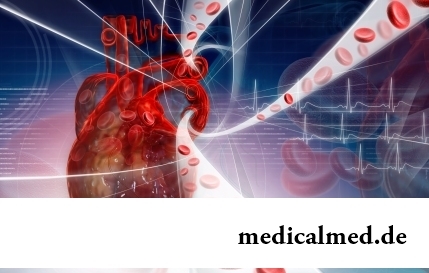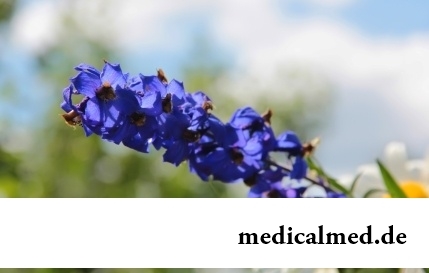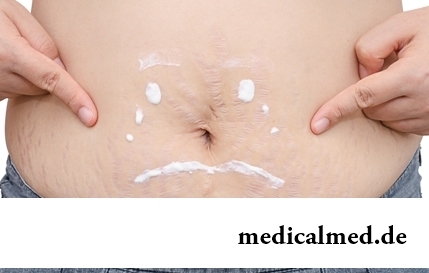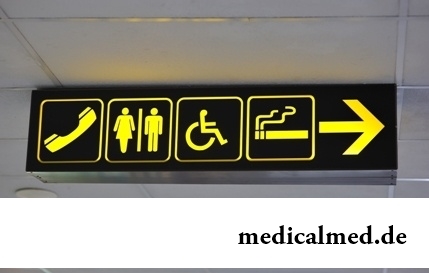





Refortan of GEK of 10%
Application instruction:
 Refortan of GEK of 10% – plasma substituting drug.
Refortan of GEK of 10% – plasma substituting drug.
Form of release and structure
Refortan GEK of 10% is released in the form of solution for infusions: transparent or poorly opalescent, from light yellow color to colourless (on 250 or 500 ml in bottles, on 10 bottles in a cardboard pack).
Structure of 1 ml of infusion solution:
- Active agent: hydroxyethylstarch (GEK 200/0,5) – 100 mg;
- Auxiliary components: sodium chloride – 9 mg, water for injections – 931 mg.
Indications to use
Refortan GEK of 10% is appointed for treatment of a hypovolemia at acute blood loss in cases when therapy by solutions of crystalloids is insufficient.
Contraindications
Absolute:
- Intracranial bleedings or acute disorders of cerebral circulation on hemorrhagic type;
- Overhydratation;
- Hypopotassemia;
- Hypervolemia;
- Hyperchloremia;
- Fluid lungs;
- Hypernatremia;
- Dehydration;
- Burns;
- Sepsis;
- Renal failure;
- Dekompensirovanny chronic heart failure;
- The expressed disturbances of coagulability of blood;
- Hemodialysis;
- Critical states (as a rule, patients who are in department of intensive therapy / resuscitation);
- States after organ transplantation and carrying out operations on open heart in the conditions of artificial circulation;
- Heavy liver failure;
- Intracranial hypertensia;
- Pregnancy (I trimester);
- Age up to 18 years (due to the lack of necessary clinical data for patients of this age group);
- Hypersensitivity to drug components.
Relative (Refortan GEK of 10% is appointed with care in the presence of the following diseases / states):
- The compensated chronic heart failure;
- Liver failure (easy / moderate severity);
- Disturbances of coagulability of blood, hemorrhagic diathesis;
- States after carrying out surgical interventions;
- Injuries;
- Age of 65 years;
- Pregnancy (II-III trimesters; use is possible only according to vital indications after ratio assessment advantage/risk because of probability of development of anaphylactic reactions and damage of a brain of a fruit).
Route of administration and dosage
Refortan GEK of 10% is applied in the form of intravenous infusions.
If there are no other instructions, solution should be entered intravenously kapelno in the doses necessary for substitution of volume of the circulating plasma.
The daily dose and rate of administering are calculated depending on blood loss, an indicator of a hematocrit and concentration of hemoglobin. It is recommended to apply the smallest effective dose whenever possible.
The beginning of introduction needs to be limited to the initial stage of recovery of the volume of the circulating blood (VCB). Introduction duration – till 24 o'clock.
The first 10-20 ml of Refortan of GEK of 10% because of probability of development of anaphylactic reactions need to be entered slowly, carefully controlling a condition of the patient. At too high dose / быстром introduction it is necessary to consider risk of an overload of the blood circulatory system. Therapy is carried out under constant control of a hemodynamics (that there was an opportunity to interrupt infusion right after achievement of the appropriate target objective of hemodynamic parameters).
At young patients without risk of pulmonary complications a limit of use of objemzameshchayushchy colloid drug the hematocrit to 30% is considered. The maximum speed of infusion for adults averages 18 ml/kg/h (is defined by initial indicators of a hemodynamics).
The maximum daily dose – 18 ml/kg (1,8 g of GEK/kg). For patients whose mass makes 75 kg it corresponds to 1350 ml of Refortan of GEK of 10%.
Side effects
Probable side reactions (> 1/10 – it is very frequent;> 1/100, <1/10 – it is frequent;> 1/1000, <1/100 – infrequently;> 1/10 000, <1/1000 – it is rare; <1/10 000 – it is very rare; with an unknown frequency – at impossibility to estimate emergence frequency according to the available data):
- Immune system: very seldom – anaphylactoid reactions (most often in the form of a fever, slight increase of temperature, vomiting, a small tortoiseshell, an itch), a grippopodobny syndrome (including muscular / a headache, hypostasis of the lower extremities), the increase in parotid and submaxillary sialadens, heavy reactions of intolerance proceeding with shock and symptoms posing a threat for life (sometimes up to a breath stop / cordial activity). In cases of development of reactions of intolerance it is necessary to interrupt immediately infusion and at the same time to begin to carry out the standard measures of the emergency help;
- Lymphatic and hemopoietic system: very often – decrease in hematocrit/concentration of proteins of a blood plasma because of hemodilution; often (depends on the entered dose) – decrease in concentration of blood-coagulation factors at rather high doses of GEK (perhaps passing increase in time of a bleeding/blood coagulation);
- Skin and hypodermic fatty tissue: infrequently (at long daily administration of drug in average/high doses) – the itch which is difficult giving in to stopping (its emergence later after the end of treatment and preservation for an appreciable length of time is possible several weeks);
- Kidneys and urinary tract: seldom – pains in kidneys (it is recommended to interrupt infusion, to provide sufficient receipt in a liquid organism, to exercise frequent control of level of creatinine of blood serum); with an unknown frequency – a renal failure;
- Liver and biliary tract: with an unknown frequency – damage of a liver;
- Laboratory indicators: very often – increase in activity of amylase of blood serum (it is caused by formation of the GEK amylase complex which is slowly removed by kidneys; with clinical display of pancreatitis it is not connected). Change of such laboratory indicators as concentration of fatty acids, protein, glucose, a sorbitdegidrogenaza in a blood plasma, cholesterol, biuretic test, SOE, specific weight of urine is possible.
Special instructions
Refortan does not exert 10% of impact to GEK on blood typing.
It is necessary to consider that at too bystry introduction and use of high doses the hemodynamics can be broken.
During therapy it is necessary to control electrolytic composition of blood serum, to monitor sufficient receipt in a liquid organism (not less than 2-3 l a day), and also to control a functional condition of kidneys. To prevent developing of an overhydratation because of what there can come the decompensation of heart failure in the presence of heart troubles in the anamnesis, it is necessary to control OTsK and cordial activity.
At a lack of fibrinogen Refortan GEK of 10% can be applied only in case of emergency when danger in lack of components of donor blood threatens life of the patient.
Because of the existing probability of emergence of anaphylactoid (allergic) reactions careful control of a condition of the patient and establishment of low rate of administering of drug is shown. Symptoms of an anaphylaxis can develop within several minutes. Main symptoms: erubescence (sudden rush of blood to a neck, a face), a severe itch, suffocation (in the form of feeling of "a lump in a throat"). Emergence of nausea, spasms in a stomach, tachycardia, arterial hypotension is characteristic of the following stage that can lead in certain cases to a loss of consciousness, up to the termination of cordial activity and an apnoea.
At development of reactions of intolerance it is necessary to interrupt Refortan's introduction by GEK of 10% at once and to hold urgent events.
At a renal failure, and also at patients who receive replacement renal therapy use of drug is contraindicated. In an initiation of treatment it is necessary to exercise control of level of creatinine in blood serum. At emergence of the first signs testimonial of development of disturbances from kidneys, therapy is cancelled. There are messages on increase in the need for replacement renal therapy after administration of drug (up to 90 days; throughout this period it is recommended to control a condition of function of kidneys).
There is an interrelation between a dose and frequency of development of an itch at otonevrologichesky diseases (a sonitus, sharp decrease in hearing, a sound injury). Against the background of these diseases it is recommended to limit a daily dose of Refortan of GEK of 10% to 250 ml.
At a heavy liver failure drug is not appointed. The patient with easy / moderate severity, and also at disturbances of coagulability of blood Refortan it is necessary to apply GEK of 10% with care. At treatment of a hypovolemia it is necessary to avoid heavy hemodilution. In cases of repeated purpose of drug careful control of parameters of coagulability of blood is necessary. Emergence of the first signs of a coagulopathy is the reason of drug withdrawal.
Before Refortan's appointment GEK of 10% patients after injuries or surgical interventions should estimate an advantage ratio with uncertain long-term safety as the long-term data confirming safety and efficiency of use of drug for this group of patients are absent. It is recommended to consider the possibility of use of other available therapeutic measures.
To reduce probability of development of the complications connected with a hypervolemia from kidneys and cardiovascular system, patients of advanced age at whom existence of a heart/renal failure is most probable need to treat carefully selection of a dose and control of a state during treatment.
Medicinal interaction
When mixing Refortan's by GEK of 10% with other drugs / substances in one container / system development of the phenomena of pharmaceutical incompatibility is possible.
Before each introduction it is necessary carefully (at least visually) to exercise control of compatibility of drugs, however it does not allow to exclude cases of pharmacological/chemical interaction which is not defined visually.
At the combined use of Refortan of GEK of 10% with aminoglikozidny antibiotics potentiation of nephrotoxicity of the last is possible.
Terms and storage conditions
To store in the place, unavailable to children, at a temperature up to 25 °C, not to freeze.
Period of validity – 5 years.
The most rare disease – a disease the Kura. Only representatives of the tribe Faure in New Guinea are ill it. The patient dies of laughter. It is considered that eating of a human brain is an origin of a disease.

The state of health of the person in many respects depends on chemical composition of biological liquids of an organism. Specialists consider that з...
Section: Articles about health
It is pleasant to state a possibility of improvement of quality of life of people with problems of functioning of secretory system. Efforts of talented inventors created products which will be able to provide normal life activity of clients with moderate degree for...
Section: Articles about health
Many parents of children at the age of 2-4 years face excessively whimsical behavior of the child. The kid exhausts constant crying and whims not only the parents, but also himself. In what the reasons of children's whims. And how to fight with them?...
Section: Slideshow
The majority of gynecologic diseases prove three main signs, each of which speaks about need to the visa...
Section: Articles about health
Practically each person is familiar with the annoying, pulling, unscrewing pains caused by overcooling of muscles of a back. In certain cases inflammatory process is not limited to discomfort, being followed by emergence of hypostasis, consolidations, increase температ...
Section: Articles about health
No, probably, the person who would not have cold. Cold, cough, a headache – these symptoms are known to everyone. The peak of catarrhal diseases is the share of fall. SARS already came to schools and kindergartens, flu slowly makes the way to the cities, in a word, winter close!...
Section: Articles about health
Several decades ago the basil (the district khan, реан, Reagan) was considered as a part of the Caucasian or east cuisine, but today it is strong for...
Section: Articles about health
From the failure of work of immune system which is shown in the form of an allergy, statistically, more than 40% of the population of the globe suffer. In most cases pathological reactions cause the substances which are contained in food stuffs, hair of animals, medicines...
Section: Articles about health
What they, women? Beautiful, gentle, passionate and at the same time windy, gusty, and nervous. And what is stranger: have all these qualities of the woman at the same time. But here only the mood their time sharply changes on completely opposite: in the morning they laugh and joke, and in the evening cry or are irritated....
Section: Articles about health
It is impossible to imagine human life in which there would be no plants. Practically in each apartment and any of productions...
Section: Articles about health
Zone hypostases under eyes - very widespread problem giving to people is a lot of inconvenience. Hypodermic fabric in these parts has very loose structure and almost does not contain collagenic fibers. Besides, the skin covering подглазья constantly is exposed...
Section: Articles about health
Iodine - one of thirty most important microelements in our organism. The main role of iodine consists in synthesis of thyroid hormones of a thyroid gland - the substances which are responsible for the majority of exchange processes of an organism. It is known that thyroid hormones consist of iodine more than for 65%. The lack of iodine leads to decrease in production of hormones and, as a result, development of a hypothyroidism. The long condition of deficit can become a source of problems of the cardiovascular, bone, digestive SI...
Section: Articles about health
Striya (extension) are the defects of skin having an appearance of direct or wavy strips from 1 to 10 cm long and 1-5 mm wide. In most cases at women of a striya are located on a stomach, hips, a breast or buttocks. At athletes they can appear on shoulders and the internal surface of forearms. At initial stages of development of an extension have red or lilac color, but over time their coloring turns pale, and strips become whitish, getting a nacreous shade....
Section: Articles about health
Separate food - the system of meal based on digestion physiology which is carried to improvement methods. In opinion д...
Section: Articles about health
The saying "the rich do not know how the other half lives" is known to all. In a broad sense it is that we can not always understand the person whose features of a state are unknown to us. If with physiological characters of diseases the situation is more or less clearly (having noticed and...
Section: Articles about health
The trophic ulcer is not an independent disease. This heavy complication arising owing to a thermal injury (a burn or a frostbite), chronic pathologies of arteries or veins of the lower extremities, a diabetes mellitus, and also some defeats of connecting fabric, absorbent vessels, skin or nervous trunks. Pathology is shown in the form of not healing wound located on the internal surface of a shin, a foot sole, a heel or toes....
Section: Articles about health
You heard that laughter prolongs life? To establish longevity direct link with sincere fun to researchers yet not удалос...
Section: Articles about health
Coffee - the tonic loved by many for the invigorating aroma and deep taste. Having the stimulating effect, coffee increases working capacity, promotes concentration of attention, fights against drowsiness and improves mood. Statistically, about 30% of inhabitants...
Section: Articles about health
Since the moment when the child becomes a school student, his sight begins to be exposed to the strengthened loadings which are supplemented with viewing of animated films and long computer games. During this period of life of the child development of not completely created organs of sight, it is very easy to break the excessive loading which is aggravated with lack of a work-rest schedule. As a rule, and occurs: according to WHO statistics, every fourth child of school age has these or those diseases of eyes, Wednesday...
Section: Articles about health
The naturopathy sometimes moves as the new direction of medicine, something like fashionable hobby, and there is nothing farther from the truth....
Section: Articles about health
Each person has easy indispositions which he transfers "standing", trying not to ask for medical care. Arguments at the same time are adduced same: "it is a trifle, itself will pass", "I have too many important issues", "there are no wish to spend time on...
Section: Articles about health
Practice of hypnotic impact on consciousness of the person contains about two millennia. During this time scientists managed to learn a lot of things about a phenomenon of hypnosis and learned to facilitate a condition of the patients having heavy illnesses with its help....
Section: Articles about health
The number of long-livers is very small. One person from 5 thousand lives up to age of 90 years, and the centenary boundary steps only about...
Section: Articles about health
One of the major chemical processes happening in a human body are oxidation reactions. They go with participation of fats and carbohydrates which we receive from food, and the oxygen getting to us from air. A main goal of such reactions is it is received...
Section: Articles about health
Such trouble as the milkwoman's attack, at least once in life happened almost to each woman. Prevalence of a disease is explained by the fact that the causative agent of an illness belongs to the so-called opportunistic microflora living on mucous membranes of any human body and which is becoming more active only under favorable conditions. If you had curdled allocations from a vagina, the itch and burning in external genitals, or painful feelings disturb at sex...
Section: Articles about health


